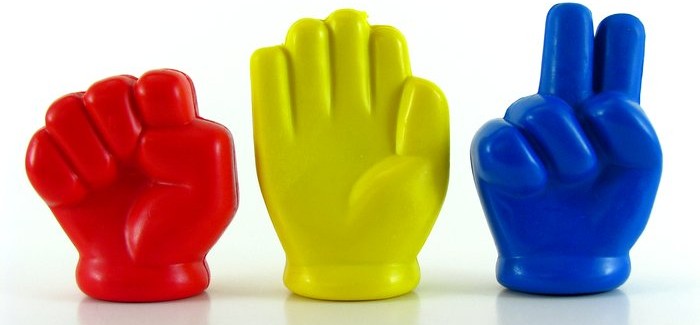In my long-running quest to become a better human being, one aspect I added recently to my mornings at the gym was “listening to business or influencer podcasts on my phone.” Admittedly some of these things tend to be lots of bullshit and/or buzzwords, but sometimes you get a rare gem that makes you think about things a little bit differently. This morning was somewhere in the middle of those two realities.
Let me begin, as one often does, with a story.
The speaker on this Harvard Business Review podcast — it’s called “IdeaCast,” I believe — is Cass Sunstein, who works at Harvard Law. He wrote this book called Wiser, which tries to move beyond groupthink to make groups smarter, and that’s why he’s on the podcast. He talks about a lot of interesting concepts — perhaps most notably why we still use juries when we know there’s all these flaws to a group of people trying to make decisions — but here’s an interesting anecdote he tells.
When the Miami Heat signed LeBron James and Chris Bosh to go alongside Dwyane Wade a few years ago, Sunstein — who one can assume is a Boston boy — had the chance to meet Bill Russell. He asked Russell if the Heat were shoo-ins for the NBA Title that year. “No,” said Russell. Sunstein was confused and pressed. Russell said simply: “One ball.” (Cue laugh track.)
As we all know, the Heat didn’t win the title that year — the Mavericks did — and right now, a new Big Three of LeBron, Kevin Love and Kyrie Irving is 19-20 and third in the Central. If the playoffs started today, they’d make it — but only because the Eastern Conference isn’t great.
What does all this mean for cubicle work and teams? A lot, actually.
Sunstein talks about “C-Factor.” In essence, that’s how well we’re able to work together — how well we read the social cues of others and play off those in terms of the overall group dynamic. Phrased another way, generalized intelligence is a good indicator of success in a group, but C-Factor is a much better indicator.
People often get C-Factor confused with things like “your four-letter combination on Meyers Briggs,” which Sunstein advises against. Meyers-Briggs is not a predictive test by any means. It can essentially predict nothing except the fact that a bunch of middle managers will toss around their four letters for the next 72 hours, then totally forget they ever took the Meyers-Briggs a week later. (I’ve seen that happen so many times, I’ve lost count.)
C-Factor is a challenge because that’s hard to screen for — in a way, you’re trying to measure self-awareness (in and of itself a hard trait to find) combined with external social awareness (again, hard to find individually). A person that has both is very rare, especially in corporate life; I’d argue that if you have both, you might get pretty burned out on corporate life pretty fast, because very little about how you think or want to behave will be rewarded in a standard corporate setting. This idea of “CQ” comes close. But it’s not quite all the way there — it’s almost a white whale of characteristics in some sense, and it’s not something Human Resources can easily put into boxes when screening.
You probably won’t work on a lot of teams with high levels of C-Factor, although when selecting team members for a given project, you should be considering the personality fabric. A team of all go-getter Type-A people is a total mess as well, even though many managers might admit preferring that.
Since you can’t probably chase this C-Factor idea as much as would be ideal, the other ways to look at it are around these types of concepts:
- Start with a culture of respect.
- Clearly define whose role is what.
- Make the meetings purposeful.
- Decide how to evaluate the final product.
C-Factor is a cool concept, and if people had a more effective way to screen for it, I think it could mean a lot to how we work in teams — which is the core of most work, honestly. Right now, we don’t have a standardized way to determine “Well, this person has some C-Factor in them,” and that’s why it probably won’t catch on as a broader concept in the short-term. Although maybe if managers walked around a bit more, embraced humility, and understand that part of their job is actually coaching, then maybe it could happen more and more.

Definitely gave me something to think about, in terms of building collaboration and mutual respect at work. I hope I’ve gotten better at this kind of thing (at work) over time, though it’s not always easy. Being open to and empathetic of others can get exhausting. Like you, I tend to be wary of Meyers-Briggs professional development. Is there reason to believe that “c-factor” is something you can measure or improve on?
I don’t think you can measure it, because it’s probably too “squishy” a concept. (Hence, it terrifies people.) But I do think you can teach people to work in teams better. (I think.)